Launching a product is an exciting journey, but deciding your success in the marketplace is also necessary. A press release for your product is one of the most crucial papers to prepare for your launch. But what is it, and how do you make one?
According to our PR specialists at Lamphills, the prelaunch stage is the most essential part of your launch. This is when you will prepare a press release for your new product by following these three simple procedures.
The PR aspect of promoting your new product is a crucial procedure that involves everything from research and pitches to press kits and follow-ups. Ultimately, once the launch is official, your team should have all the resources needed to begin outreach. In this article, I will guide you through writing a comprehensive press release for a product launch.
Key Points
- A product launch press release provides all the relevant information about a product you’re launching, will launch, or recently launched.
- Your product launch press release should include some of these elements: logo, contact information, dateline, headline, sub-headline, introduction, body, boilerplate, and close.
- To write an effective product launch press release, consider the following tips: plan it out, create an outline using the most important information, create an amazing headline, give an easy yet captivating introduction to your story, proofread, and try it out.
- To measure the success of your product launch these metrics will tell you whether your party was a hit or a miss: product-market fit, net promoter score (NPS), market share, and conversion rates.
What Is a Product Launch Press Release?
A product launch press release is a press release that provides all the relevant information about a product you’re launching, will launch, or have recently launched. You formally declare you have a new product up your sleeve and introduce it to the world with the help of a product launch press release.
While your product launch event might have limited outreach, you can distribute your press release globally, as it is not limited by physical constraints or geography – and that’s not even the best part.
You’re in total control of planning and strategy. You decide the product placement, brand messaging, and public outreach you generate. Just ensure that the press release is a part of a strategic PR campaign.
Why Is It Important to run a New Product Launch PR campaign?
Simply put, PR is the way to get coverage and exposure for your new product launch, which will be the fuel for your success. Word will get around whether your product is discussed on the news or relevant blogs, and people will start learning your name.
Your product press release is the main document you’ll use to share your product’s story. If you manage to get coverage in the media, it’ll make you more credible and get your potential users to trust your product.
Remember that journalists will use your press release to gather the most important information about your product. It’s common practice for journalists to copy and paste your story into their articles about you, so you need to include all your crucial product information. It will also help to imagine writing a news post when crafting your press release.
Creating a press release and sending it to journalists should be one of the top items on your product launch checklist. Why? Your product launch press release will help build buzz around your new product. Ultimately, media exposure is something you simply need.
Elements to Include in Your Product Launch Press Release
Travel the world and the seven seas (or just surf the web a bit!), and you’ll see that great product press releases are made of these:
#1. Logo
Your brand’s logo is the most recognizable brand identifier. Did you know that 75% of consumers can identify a brand by its logo?
Placing the company logo in your press release will help ensure your product attracts the right audience’s attention.
Plus, consistently using your brand’s visual identifiers can help you increase revenue by 23%.
#2. Contact Information
Including your company’s contact information in the press release will make it easy for interested people to contact you and ask questions about the new product.
Ensure to include relevant points of contact rather than your company’s general contact information.
In the Adobe example, we can see that the brand provides the contact information of PR staff.
#3. Dateline
As you know, timing is essential in PR.
Fractl says that morning to noon is the best time to send your pitch, preferably at the beginning of the week — from Monday through Wednesday.
After your email is opened, the publisher needs to know your intended publication date.
You can ensure everything goes as scheduled by including a dateline in your press release.
#4. Headline
Now, let’s see what you need to include in the content.
First, you must create an engaging, short headline that grabs the reader’s attention.
Your headline should let the audience know what they’re about to read.
Let’s take a look at Adobe’s example.
They chose a concise, straightforward heading informing the reader about the press release’s content.
#5. Sub-headline
After the headline, consider adding a sub-headline that gives more detail about the product to be announced.
Write about your product’s unique selling point and the benefits it can bring to your customers like Adobe did here:
#6. Introduction
The first paragraph should contain all the key details about your product laid out engagingly.
The goal here is to make the reader interested to read your text.
To do so, you should include your product’s most exciting features and benefits in the introduction.
#7. Body
After an eye-catching introduction, you need to maintain the reader’s interest throughout the press release body.
To do so, consider using bullet points to structure your important information in a scannable way.
You should also minimize technical details and focus on how your product will help the customer.
Talk about benefits and advantages, and reiterate your USP.
#8. Boilerplate
Before closing, don’t forget to let the publishers know who you are and what you do.
To do so, you must include a boilerplate text towards the end of the press release.
Think of the boilerplate section as your website’s “About Us” section.
In this case, you’re telling the press about your company and what your brand stands for in a few sentences.
Read also: Press Release Boilerplate: Writing An Effective Copy
#9. Close
Finally, your work is pretty much done. You only need to write a closing paragraph, and you will have finished your press release.
Looking at the Adobe example again, we can see that their boilerplate also contains a call to action.
You can follow their example and include a CTA in your closing paragraph. This will help you prompt readers to take further action.
Do you want them to visit a landing page? Call you. Go to your website.
Whatever it is, you should mention it and make it easy for the reader to follow through with the CTA. Include the necessary links, phone numbers, and so on.
Tips for Writing an Effective Press Release for a Product Launch
This section is one of the most important parts of this ultimate product launch press release guide. I’ve created a step-by-step tutorial on how to write a press release for your new product launch.
Follow this guide, and you’ll have a much easier time creating your product launch press release content. I’ll tell you about essential press release elements, what general structure you should use, and how you can charm potential readers with your content.
Without further ado, let’s jump right into step 1.
#1. Plan it Out

The first step in writing a press release is doing your research. Look at other press release examples to understand what you’ll be creating.
Create a basic template for each section and follow the rules of writing a press release. This can be anything from including “for immediate release” at the top to figuring out your mailing list.
#2. Create an Outline Using the Most Important Information

Subsequently, you must draft an outline that includes each paragraph’s theme. Verify if the flow is organic. Remember that explaining your product won’t be your aim. Your primary objective is to make it intriguing enough to pique the interest of journalists.
Press release novices frequently make the error of concentrating too much on the product and its attributes. Keep in mind that you are crafting a narrative. After reading it, the journalists must be able to craft a compelling tale for their audience.
To make sure that journalists can get a newsworthy story from your press release, check that it ticks all of these boxes:
- It must be of interest to their readers
- It must be timely
- The readers must benefit from learning about it
Whatever focus point you choose for your press release, you must ensure it’s not too salty. Your goal is not to sell your product to the journalists; it’s to introduce an innovation to the sphere.
Your outline should include all the essential information about your launch to ensure you leave nothing out.
#3. Create an Amazing Headline

The headline for your press release is the most crucial language or phrase you’ll write. It must express the essence of the product and be memorable. Give it the tone of a news story. You’ll know when you’ve found the ideal sentence.
Keep headlines around 25 words so journalists can find them easier and more enticing. A headline should ideally be between 10 and 20 words long. The nature of your product and its target market will determine the ideal headline length.
#4. Give an Easy Yet Captivating Introduction to Your Story

The body of your press release must describe the backstory of your product. The secret is to make it succinct and memorable. It is important to ensure that journalists will notice your press release, as they receive several releases daily.
A press release should ideally be no more than 500 words. When composing one, you can draft a longer version and then rewrite it for a few more hours. The most essential information should remain after removing anything that doesn’t immediately add value.
Write a press release that’s easy to read. Tools like Grammarly can check for grammar mistakes, appropriate sentence lengths, and other metrics. Regardless of your reader’s literacy level, short and simple content will always be easier for them to understand.
#5. Proofread
The next step for writing an amazing product launch press release is proofreading. Not only do you have to check for grammar mistakes, but you also need to ensure that you’ve included all your essential information.
#6. Try It Out
The only thing left to do is test your product launch press release once you have the final edition. Sharing it with someone unfamiliar with your product will be a smart idea. After they’ve read it, ask them the following questions:
- What were the 3-5 focus points?
- Why should you care about this product?
- What does the company do?
If you are happy with their answers, you have a good thing going.
Next steps – pitch to journalists!
Along with your press release, your pitch should include supporting documents like pictures, videos, your logo, etc. Journalists can use these elements to enhance your story in their articles. Naturally, the better-looking your product is, the more interest you’ll get from readers.
Now that you know how to write a product launch press release, let’s discuss how to make it as great as possible.
I have also provided a comprehensive product launch press release template guide for easy writing below.
Lamphills Product Launch Press Release Template
What Are Some Examples of a Product Launch Press Release?
Not every product launch inspires the same amazement, but successful ones generate the much-needed buzz before your product is out. A hastily thrown-together announcement on LinkedIn and a handful of “Look what we’ve got here!” emails sent to your worn-out lead list are unlikely to thrill your target audience. (A lack of excitement over even the greatest product doesn’t bode well for your app’s future adoption.)
I know because I’ve experienced this all myself. Last year, I spearheaded 10 product launches, and I’ve learned the hard way what makes them successful and what makes them fall flat.
I’m not alone. Hundreds of SaaS products launch daily, so coordinating a differentiated product launch has never been more important to cut through the noise. After much trial and error, I’ve compiled the best product launch examples, highlighting some innovative ways companies have successfully announced their new offerings.
While these examples of successful product launches may not fit your exact approach, I hope they can inspire your next big release.
#1. Airbnb’s Innovative Outreach to Homeowners via Craigslist
When Airbnb was still a fledgling startup, it faced a crucial challenge: attracting hosts and guests to a brand-new rental platform? Their solution was as creative as it was effective—turning to the widely used Craigslist to find potential hosts.
Airbnb’s strategy began with a direct email campaign targeting homeowners listing their properties on Craigslist. This wasn’t your typical, dry sales pitch either—it was personalized, engaging, and presented Airbnb as an exciting, novel way to rent out their spaces.
These emails were designed to inform and capture potential hosts’ imaginations, enticing them with the prospect of joining an emerging and innovative rental community.
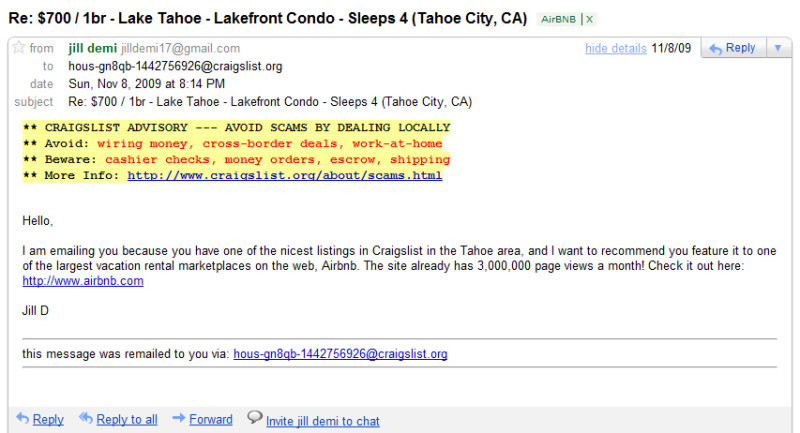
However, Airbnb didn’t just rely on the charm of its emails. It used the responses from these initial contacts to feed an algorithm, which then automated finding and reaching out to new potential hosts on Craigslist. This move showed a blend of technological and marketing acumen, significantly expanding Airbnb’s reach during the critical pre-launch phase.
After launching the platform, Airbnb maintained its engagement through a referral program. Hosts and guests were incentivized with credits for bringing new users onto the platform. This strategy fostered a sense of community and belonging among users, turning them into active and enthusiastic champions for Airbnb’s brand.
#2. Apple
The king of press releases and product launches: Apple.

First, take a look at the heading. It conveys the press release’s main point and key product features, making the reader want to read more.
This example is filled with powerful words like “breakthrough,” “innovation,” “impressive,” and so on, which make the consumer excited and curious.
What’s more, the sub-heading highlights the reasons why customers need this product. It portrays the USP.
Another important element in this example is the image.
In fact, images and videos are core elements of the most published press releases today. In the following examples, you’ll see that not all brands use photos in their press releases. However, keep in mind that these are globally-established brands.
So, for a small business, a good-quality image placed in the right place within the press release can make a big difference.
#3. Robinhood Built Demand by Making People Wait
In 2013, Robinhood needed a way to entice customers to sign up. So, they offered customer perks for signing up more people on their behalf.
The company placed new signups on a waiting list for a YEAR before their launch, promising consumers access sooner if they got their family and friends to sign up. The more people a consumer signed up, the sooner they got access to the new service.
It turned waiting into a challenge that worked so well that the company had almost 1 million opt-ins on launch day.

#4. Logitech
This is how Logitech released a new ergonomic computer mouse.
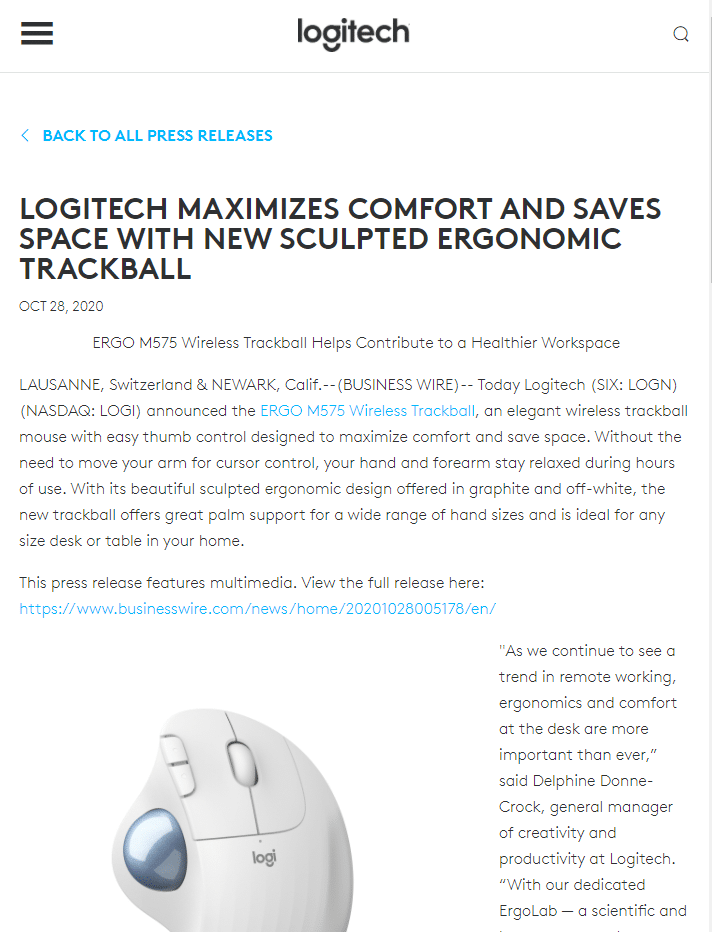
Right after the company name, Logitech states what’s in it for the customer: comfort with the new space-saving design.
The product’s name is in the sub-heading, where another product benefit is listed.
Right after a compelling introduction, Logitech quotes some executives on why the product was designed and how it can make users’ lives easier.
So, quotes in a press release are best placed in the body after the introduction. Important information should be as close to the beginning as possible.
#5. Feefo Primed Its Customers for a Big Change
Customer service SaaS company Feefo decided it was time to fully redesign its control centre for customers. But anyone who’s endured a UI redesign knows you face a large churn risk and potential disruption.
Some would be shocked to log into a platform they use every day and find that it has changed completely—a shock that could easily result in a loss of productivity and churn. That’s why Feefo mitigated this risk and communicated with customers ahead of the upcoming change.
They started by teasing the redesign launch using Appcues—strategically keeping customers informed while they were already using their software. The messaging was upbeat and focused on how the changes would improve the customer experience.
Following the teasers, Feefo lets users try the new interface before the official launch. Not only did this help prepare customers for the change, but Feefo also collected feedback on the redesign by prompting users for feedback.
When the launch was two weeks away, they updated their messaging to build anticipation.
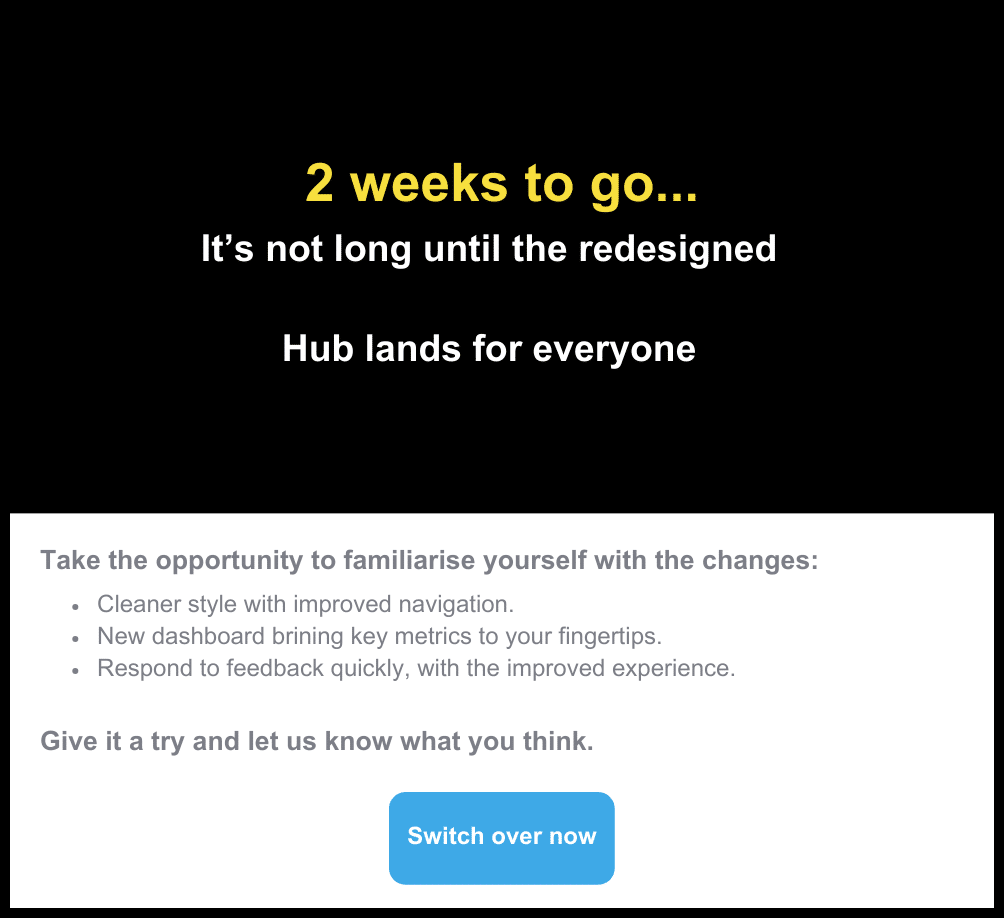
When asked why Feefo chose this tactic for its new product launch, product manager Neil Terry said:
“We needed to be in close touch with our customers to get their feedback. It was essential to keep them aware of what was happening to avoid upsetting and potentially losing them.”
And it worked.
Feefo achieved a 30% opt-in rate for the new UI and gained valuable customer feedback that they could use to improve their redesign while minimizing customer churn. Customers became more invested in the outcome since they had a voice in the changes.
#6. Samsung
Unlike the previous examples, this press release headline doesn’t mention the brand’s name.
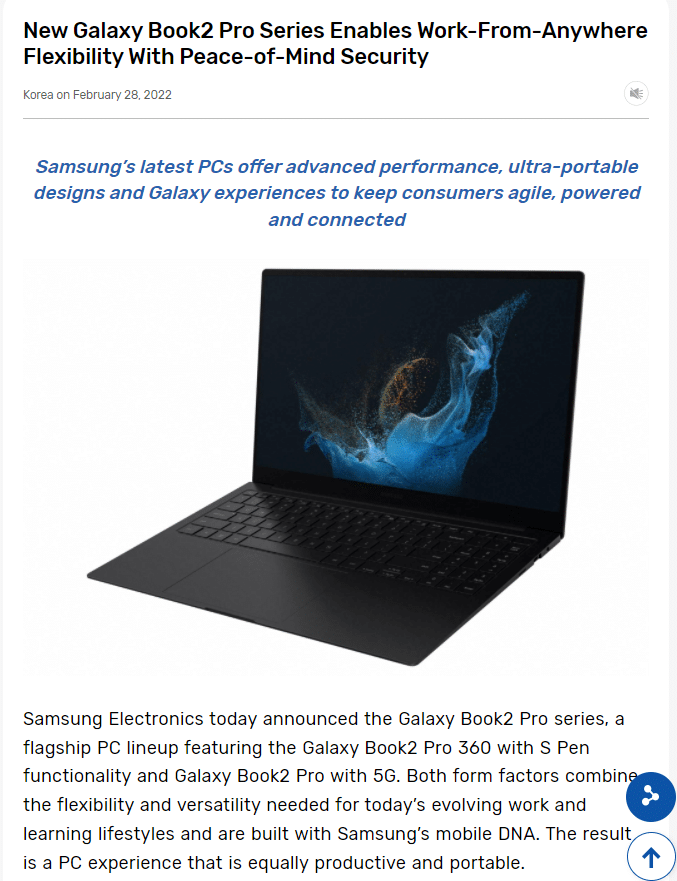
Instead, Samsung placed the product’s name in the heading with the USP.
The name of the company appears in the sub-heading.
After that, we see a high-quality product image, followed by the introductory paragraph. The introduction is centered around the user experience and product functionality.
With all these inspiring examples, you should be ready to transform your product launch into a news story with an awesome press release.
How Do You Measure the Success of Your Product Launch?
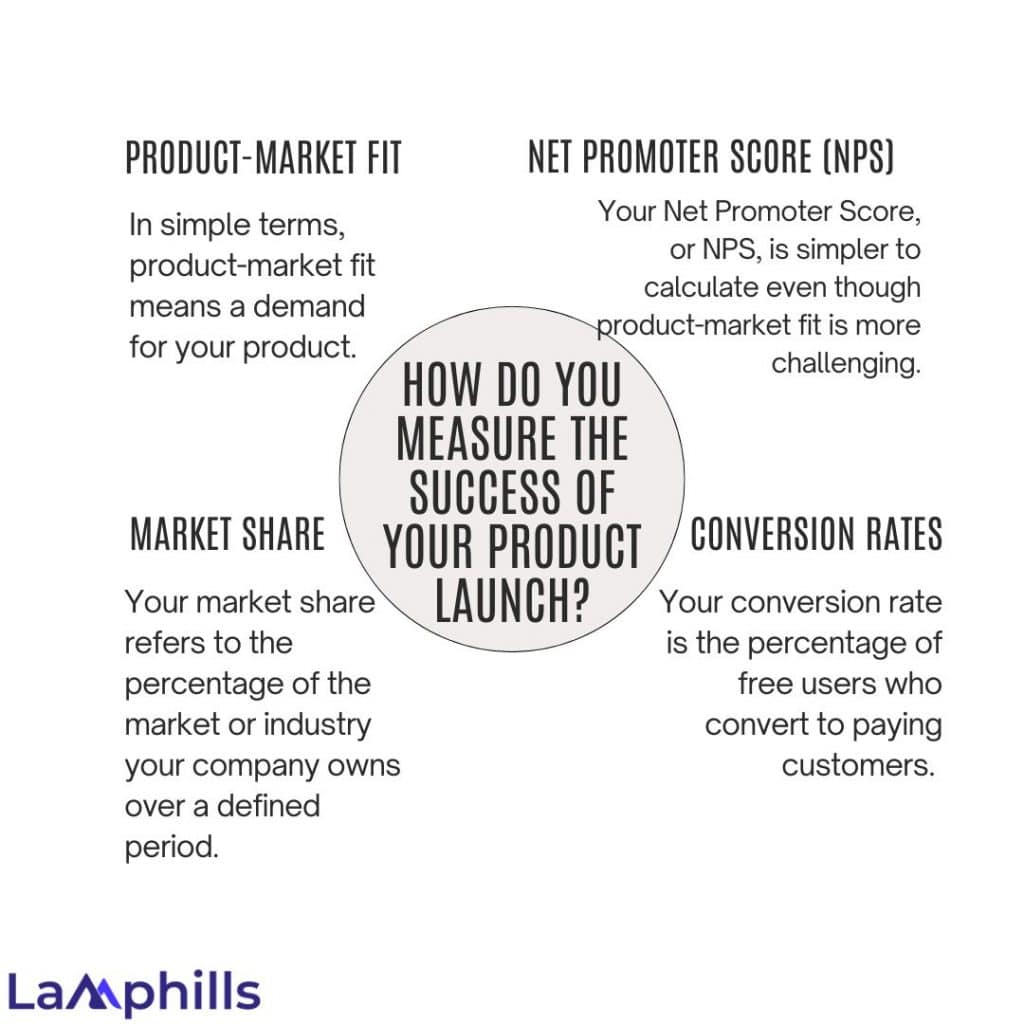
Product launches are arguably the biggest and most important part of your Go-to-Market strategy. They result from months (or years) of work, and there’s nothing quite like finally going live with your launch event. But a product launch isn’t just a big announcement and a strategic step in your overall GTM plan. How do you measure your launch success? When your product goes live, there’s much to keep track of to ensure its success. Metrics and KPIs give you the power to control, track, measure, and adjust your product launch, especially if it’s not delivering the desired results.
These metrics will tell you whether your party was a hit or a miss.
#1. Product-Market Fit
In simple terms, product-market fit means a demand for your product. We all hope to achieve it, but it’s easier said than done. You can look for signs you’ve achieved product-market fit, like high and sustainable sales, positive customer feedback, and minimal churn. But why measure something so vague? Although it is hard to define and more of a state of being than a hard KPI, product-market fit means you’re resonating with the market. That’s hard to do and harder to sustain, so you need to be able to track how successfully you’re doing this if you want to keep it up.
#2. Net Promoter Score (NPS)
Your Net Promoter Score, or NPS, is simpler to calculate even though product-market fit is more challenging. Why is this worth looking at? It can give you a sense of how you’re doing. Given that your product-market fit is a good indicator of whether or not your customers want your product, understanding how your buyers feel can point you in the right direction when restrategizing. To calculate your NPS, conduct quantitative research among your customers and ask how many will likely recommend your brand or service.
The formula looks a little like this:
[% of promoters] – [% of detractors] = NPS score.Based on your results, consider how to improve or sustain your business strategy to better reach your ideal customers or boost trust and loyalty. Remember, where you cannot establish your product-market fit, your NPS is a pretty strong indicator of whether or not your product or service meets your customers’ unique demands.
#3. Market Share
Your market share refers to the percentage of the market or industry your company owns over a defined period. Think of the market as a pie chart. If you, for example, were a company selling smartphones, you’d be measuring yourself against everyone else selling smartphones.
Your market share is the percentage of people choosing your smartphones over others. To calculate your market share, you can use the following formula:
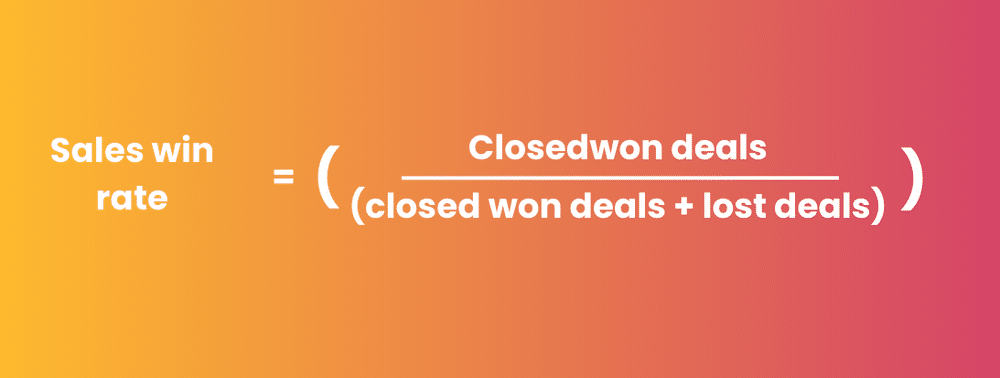
When you launch a product, tracking your performance compared to your direct competitors is important. And yeah, you guessed it—this metric allows you to do just that.
#4. Conversion Rates
Your conversion rate is the percentage of free users who convert to paying customers. With this metric, you’re tracking the number of people using your digital channels, website traffic, social media users, etc., who become buyers. Conversion rate is important because getting people onto your website and interacting with your marketing are important steps, and you can’t run a business on likes and shares alone.
What Makes a Good Product Launch?
Your launch needs to make a tangible impact. This means not just a spike in website traffic or a flurry of social media mentions (though those are great!) but real, meaningful interactions with your product. Are people signing up, downloading, or making purchases? Are they engaging with your content in a way that suggests genuine interest and not just a passing glance? Do your content marketing initiatives actually address their problems?
Bottom Line
And that’s it! This concludes our press release guide for the product launch. This comprehensive guide begins with an explanation of the importance of a press release, followed by a detailed tutorial on writing one and an example.
Remember that sending out a product launch press release is crucial in your launch process. I hope you have the best of luck by using our advice to write an amazing press release for your product!
Similar Articles
- 21 Event Press Release Templates & Examples That Inspires Me
- BEST FREE PRESS RELEASE DISTRIBUTION WEBSITES IN 2024
- HOW TO CREATE A PRESS KIT WITH EXAMPLES AND FREE TEMPLATES






